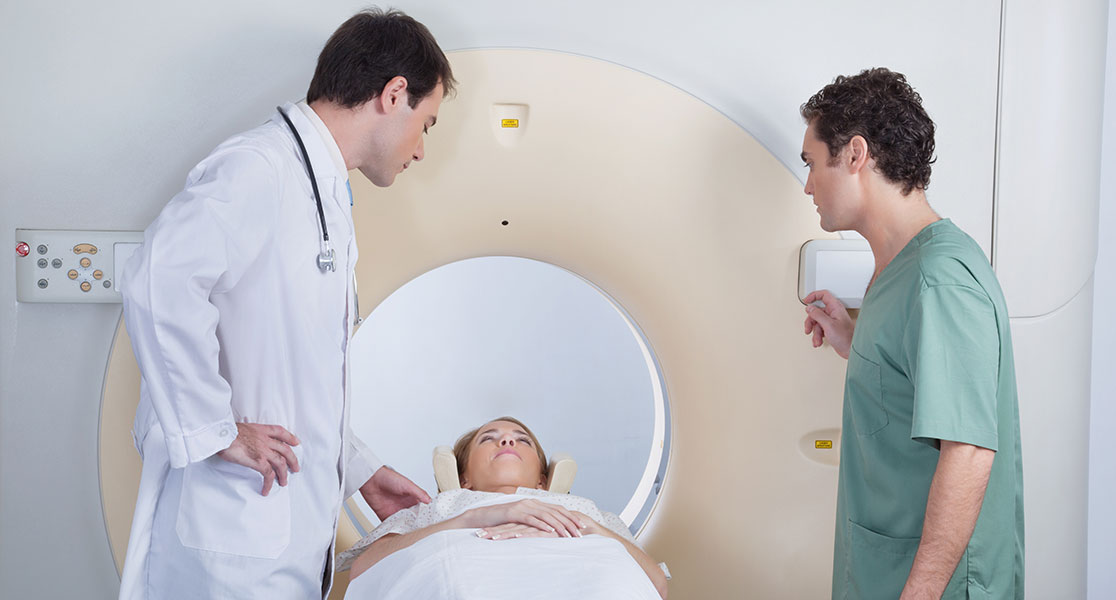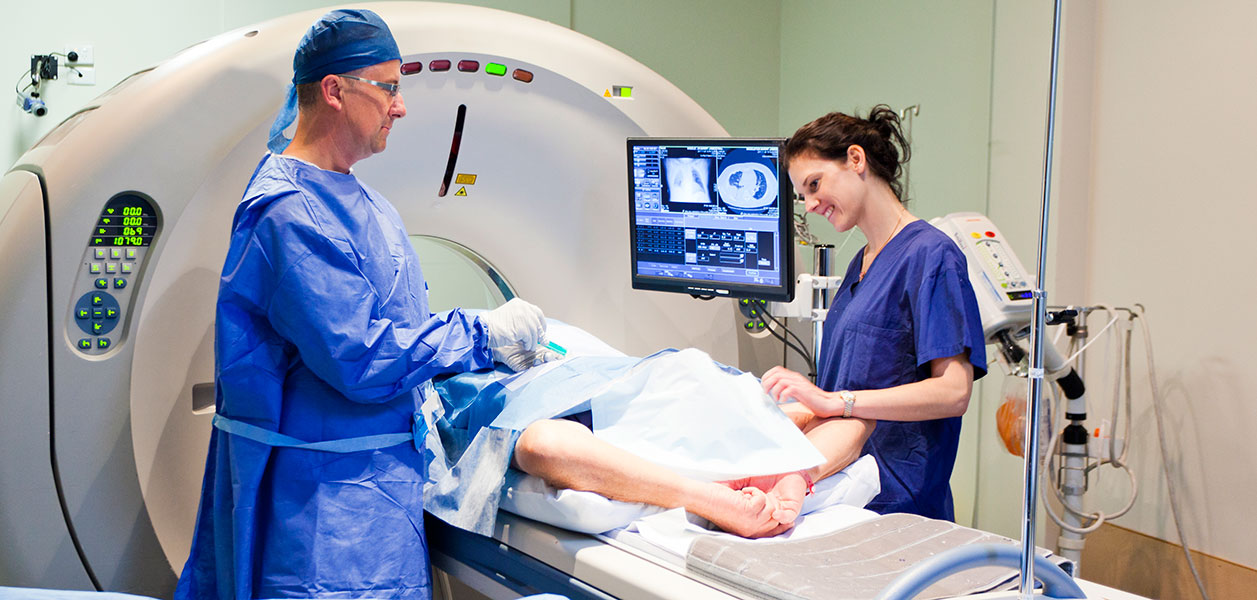Bone densitometry (DEXA) is a quick, painless scan that examines the density of your bones. Comparing your own bone density with reference data according to age, sex, race and other relevant categories, the test allows us to scan for risk factors for osteoporosis and other bone density issues.
The scan is easy and non-invasive; you will lie on a padded table on your back and are not closed in at all during the test. A mechanical arm will pass over your hip and spine during the scan; you will feel nothing. The entire process takes around 20 minutes to half an hour at our facility, with the scan itself taking about five minutes. No special preparation is needed, and you may be able to remain fully clothed so long as you remove any items with metal fasteners like zippers, buttons or hooks. Your doctor can go over the results of your scan with you to determine if there are any concerns.
FAQs: Bone Densitometry and DEXA
What is osteoporosis?
Osteoporosis is a medical condition in which bone density and strength is lost. Bones become fragile and subject to easy fractures and breaks. Osteoporosis is a sign of calcium loss, and usually affects women in middle age and older; however, it is also common in older men.
What is osteopenia?
Osteopenia is a loss of bone density that is not severe enough to be classified as osteoporosis. While a person with osteopenia has a higher risk of fractures and breaks, it is not as high of a risk as that of people with osteoporosis.
What is the difference between osteoporosis and osteopenia?
Both conditions describe bone loss and fragility, however, the difference is in the severity and amount of bone loss present. While osteopenia means that bone has been lost and density is low, it is not as severe as osteoporosis and your risk of breaks and fractures is lower. However, if you have osteopenia, there are treatments that can help you. Your doctor can help you to prevent fractures and further bone loss.
Who is likely to develop osteoporosis?
The most significant risk factors for people likely develop osteoporosis include a family history of the bone disease; menopause prior to the age of 45; a petite, thin body and being of Caucasian or Asian ethnicity. Additional risk factors include smoking, alcohol and caffeine consumption, lengthy periods of taking corticosteroids and some diseases, including hyperthyroidism and some eating disorders.
How can I be tested for osteoporosis risk?
DEXA (dual-energy X-ray bone densitometry) is the most frequently-used and trustworthy test of bone density. Using low-dosage radiation, a DEXA scan calculates bone density in the hip and spine, some of the areas of highest concern for osteoporosis and fracture risk.
What can I learn in a bone density study or scan?
Bone densitometry is used to determine if your bones have lost density or mass. If only moderate bone loss is found, this is called ostopenia; a severe loss of bone density is osteoporosis. A bone density scan helps to determine if you have one of these conditions and are at an increased risk for broken bones and fractures and to measure the improvement or worsening of your condition. A DEXA scan can help your doctor to determine if you have a condition that places you at an increased risk of bone damage, and to develop a treatment plan.



